Swayambhunath Stupa,Kathmandu-Places of Peace & Power.Photography No #10
Hello to all photography lovers!!!
Today I am sharing information about Swayambhunath Stupa,I hope you will like it.
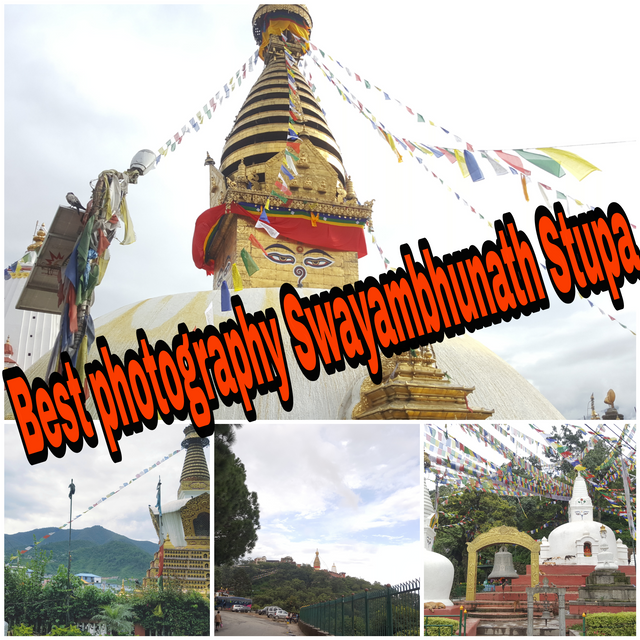
A splendid pinnacle appointed a pipe formed rich slant, Swayambhunath Stupa is the most old and bewildering of all the favored sanctums in Kathmandu valley. Its hoisted white curve and shining splendid pinnacle are undeniable for a few miles and from all sides of the valley. Bona fide records found on a stone etching give affirm that the stupa was by then a crucial Buddhist trip objective by the fifth century AD. Its beginning stages in any case, date to a generously earlier time, some time before the arrival of Buddhism into the valley. A get-together of legends about the site, the fifteenth century Swayambhu Purana, describes a sensational lotus, planted by a past Buddha, which sprouted from the lake that once anchored Kathmandu valley. The lotus bafflingly exuded a breathtaking light, and the name of the place came to be Swayambhu, connoting 'Self-Created or Self-Existent'. Sacred individuals, sages and divinities took off to the lake to venerate this remarkable light for its ability in giving illumination.
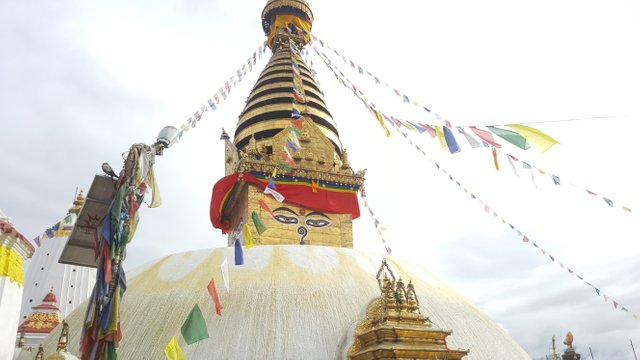
In the midst of this time, the Bodhisatva Manjushri was ruminating at the hallowed load of Wu Tai Shan and had a fantasy of the surprising Swayambhu light. Manjushri flew over the mountains of China and Tibet upon his blue lion to love the lotus. Significantly awed by the force of the splendid light, Manjushri felt that if the water were drained out of the lake Swayambhu would end up being more easily open to human voyagers. With a magnificent sword Manjushri cut a gap in the mountains incorporating the lake. The water, draining without end, left the valley of present day Kathmandu. The lotus was then changed into a slant and the light transformed into the Swayabhunath Stupa.
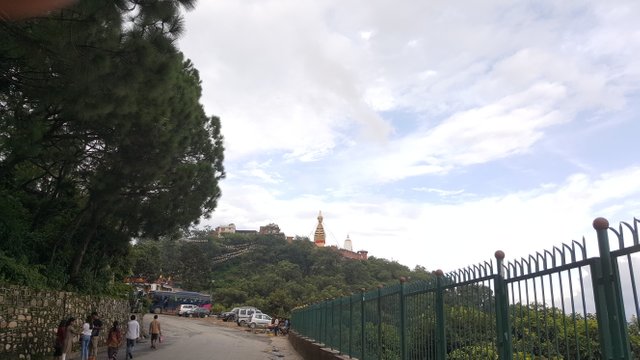
Swayambhunath's admirers join Hindus, Vajrayana Buddhists of northern Nepal and Tibet, and the Newari Buddhists of central and southern Nepal. Each morning before first light, numerous adventurers will climb the 365 phases that lead up the slant, archive past the plated Vajra (Tibetan: Dorje) and two lions guarding the entry, and begin a movement of clockwise circumambulations of the stupa (Newari Buddhists float in the converse, counterclockwise bearing). On each one of the four sides of the essential stupa there are a few immense eyes. These eyes are symbolic of God's omniscient perspective. There is no nose between the eyes yet rather a depiction of the principle in the Nepali letters all together, implying that the single technique to illumination is through the Buddhist way. Over each match of eyes is another eye, the third eye, meaning the understanding of witnessing inside. No ears are demonstrated in light of the way that it is said the Buddha isn't enthusiastic about hearing supplications in praise of him.
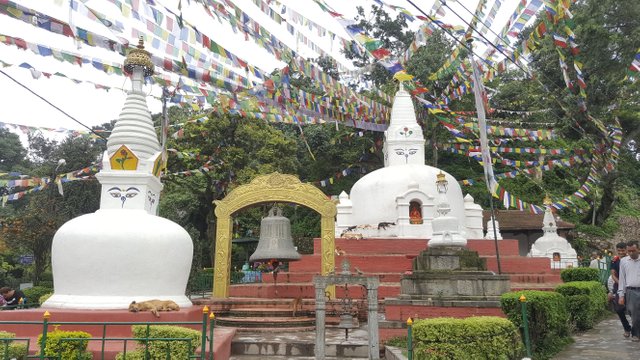
The zone enveloping the stupa is stacked with chaityas, havens, painted pictures of divine beings and different distinctive religious things. There are various minimal sacred spots with statues of Tantric and shamanistic divinities, request of wheels for the Tibetan Buddhists, Shiva lingams (now covered as Buddhist chaityas and charged with the qualities of the Dhyani Buddhas), and a standard Hindu haven focused on Harati, the Goddess of smallpox and other epidemics.The proximity of the Harati Devi asylum means the blending of the pantheons of Hinduism and Buddhism in the headway of the religious examples of Nepal. As Buddhists had no heavenly nature in their own specific pantheon to guarantee against the dreaded smallpox, they got the Hindu god for help.
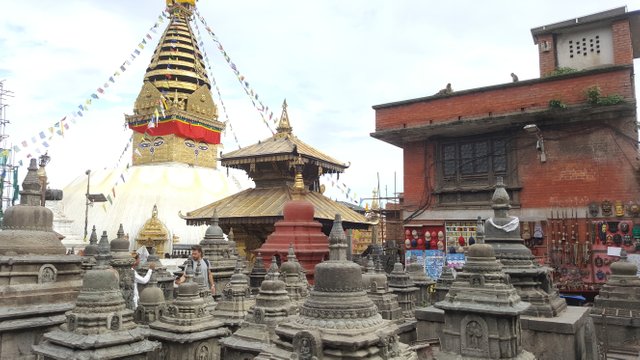
On Swayambhunath incline is another fascinating, anyway humbler and less went to asylum. This is Shantipur, the 'Place of Peace', inside which, in a riddle, constantly blasted, underground load encounter the eighth century Tantric pro Shantikar Acharya. Sharpening reflection frameworks which have secured his life for uncounted several years, he is an unfathomable recondite seer who has complete control over the atmosphere. Exactly when the valley of Kathmandu is crippled by dry season, the King of Nepal must enter the underground load to get a puzzle mandala from Shantikar. Not long after the mandala is passed on outside and appeared to the sky, rain begins to fall. Frescoes painted inside haven dividers depict when last this occurred in 1658. The little asylum has an awesome air; it is undercover, stern and to some degree premonition.
Swayambhunath stupa is furthermore called the `Monkey Temple' in light of the countless who surge about the haven around night time after the pioneers and priests have cleared out. Nearby the Swayambhunath slant are other imperative asylums, for instance, the Shiva Jyotir Linga haven of Pashupatinath, Boudhanath stupa, Changu Narayan, Dakshinkali, and Budhanilkantha. Perusers enthused about think the heavenly regions of the Kathmandu valley in detail are implied created by Bubriski, Majupuria and Moran recorded in the book reference.
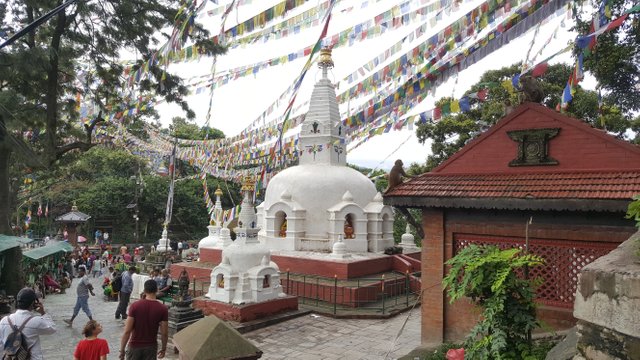
History of Swayambhunath Stupa
Exactly when this haven was set up around 2,000 years earlier, Kathmandu Valley was stacked with a mind boggling lake. As showed by Buddhist legend, a singular impeccable lotus created in the point of convergence of the lake. Exactly when the bodhisattva Manjusri exhausted the lake with a cut of his sword, the lotus blossom settled over the incline and mysteriously changed into the stupa. In this way it is known as the Self-Created (swayambhu) Stupa.
The soonest made record out of the Swayambunath Stupa's quality is a fifth century stone etching, yet analysts acknowledge there was in all probability a blessed place here as in front of timetable as the principal century. In fact, even before that, it is likely that animist functions happened on this slant. Swayambunath is one of Nepal's most prepared Buddhist havens and it has an old air, especially when one procedures by strolling with the explorers.
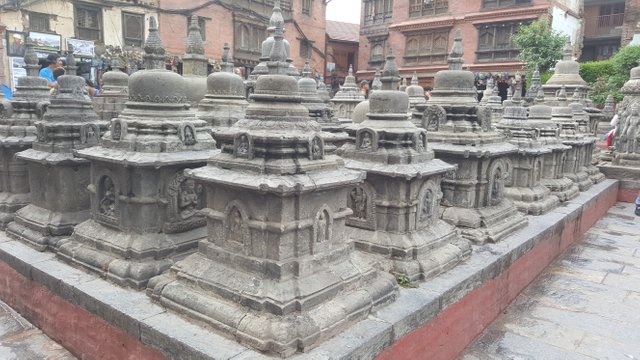
What to See at Swayambhunath Stupa
The basic method to manage the asylum is from the eastern side, where 365 old steps lead up the unsafe forested slant. The base is around a 20-minute walk around the point of convergence of Kathmandu. This staircase is the principle course pioneers would consider and is the most fundamental course for any visitor to experience the stupa. Nevertheless, a choice is to drive or take an explore toward the west side, where there are only two or three dares to move to the best.
At the base of the eastern stairway is a marvelously painted gate containing a colossal Tibetan supplication wheel very nearly 12 feet tall. It takes two people to turn it and a toll sounds in the midst of each change. Around the portal are bunches more smaller wheels. Devotees turn appeal to wheels to release supplications and mantras to heaven - visitors are welcome to do in that capacity too.
The staircase is overseen by three painted Buddha statues from the seventeenth century near the base (women perform surrenders before them in the early morning); another social affair additionally up are from the mid twentieth century.
Strewn along the staircase are numerous mani stones, engraved with the Tibetan mantra Om mani padme hum ("Hail to the pearl in the lotus"). Sellers pitch humbler types of the stones to voyagers. The stairs experience an exquisite woodlands, which is populated with the hundreds of monkeys that give the asylum its designation.
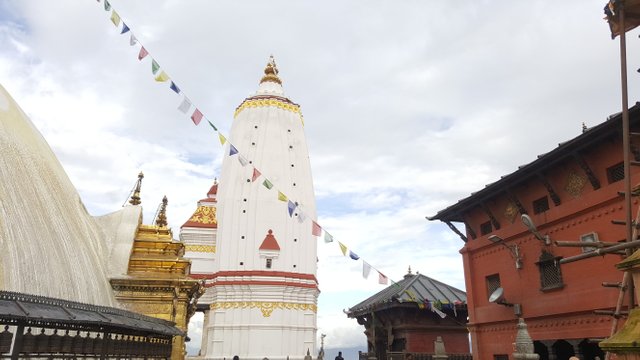
The central structures and changes of Swayambhunath are rich with Buddhist symbolism. The whitewashed curve of the main stupa represents the womb of creation, with a phallic supplement in the square apex. Climbing from the zenith is a pinnacle made of 13 splendid circles, addressing the way to illumination. The umbrella on top symbolizing enlightenment itself; some say it contains a bowl of significant stones.
The famous Buddha eyes gazing out lazily from each side of the zenith (organized to the four cardinal headings) are those of the boundlessly educated Primordial Buddha. Between each one of the arrangements of eyes is a picture that looks like a question mark - this is the Nepali number "1" and addresses the solidarity of all things. Gold plaques rising above the eyes like a crown outline the Five Dhyani Buddhas, radiant buddhas who are connected with the five distinguishes, the four cardinal headings notwithstanding the center, and various other significant social events of five.
The Five Dhyani Buddhas are moreover respected with special shrines at the base of the stupa. They stand up to the four cardinal heading, notwithstanding one possibly left of east to address the center course. Between them are asylums to four of the Buddhas' consorts. Interfacing each one of the nine consecrated places together is a chain of supplication wrangles lights. The five essential consecrated spots are encased in incredible overlaid copper repoussé work, for which the Kathmandu Valley is celebrated.
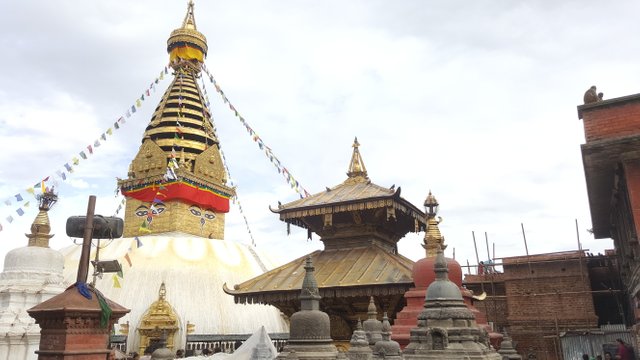
Filling the phase around the essential stupa are numerous other shrines and votive structures, by far most of which have been given by rulers and lamas over the latest four centuries. Five of them are connected with the five parts: earth, air, fire, water and sky.
Exceptional among these is the Harati Devi Temple, dedicated to the Hindu goddess of smallpox and distinctive infections, and furthermore a protectress of children. The little square pagoda is especially celebrated among the two Hindus and Buddhists, especially mothers searching for presents for their children.
Applicants throw blossom petals, rice, toned powder and brilliant water over the Harati picture, by then get a tika from the occupant minister. Monkeys, stray mutts, and pigeons fight about the rice and the sustenance commitments, adding to the turbulent condition. The photo of the goddess dates just from the nineteenth century; it replaces the principal that was pounded by King Rana Bahadur Shah after his significant other kicked the pail of smallpox.
Sustenance commitments for Harati (typically stew, rice and bread) are cooked in a kitchen on the base floor of a gompa(monastery supplication room) on the west side of the complex. Visitors can climb stairs to the gompa housetop, which is level with the Buddha eyes. From here there are fine points of view over the stupa and Kathmandu valley.
Northwest of the essential stupa is another basic holy place, related with an intriguing legend. Shantipur is somewhat, plain, box-shaped haven said to contain an unfathomable fortune - a living brilliant man who has been ruminating in there for quite a while. Legend has it that Shanti Shri, who lived in the fifth century, anchored himself a vault underneath the asylum, vowing to remain there until the point that the Kathmandu Valley required him. Entering a mystic state, he has achieved everlasting status and remains there to help the area people when required.
In 1658, King Pratap Mella slid into the chamber alone to search for Shanti Shri's help with a dry season. The ruler uncovered progressing through a couple of underground rooms, each more unnerving than the last. The vital contained broad bats and flying creatures of prey, the second was home to hungry ghosts that grasped at him in destruction, and the third was overflowing with snakes that sought after him until the point when the moment that he soothed them with deplete. The master found the heavenly individual in the last room, thin as a skeleton yet in the meantime alive and considering. Shanti Shri gave the ruler a mandala, which brought the required rain.
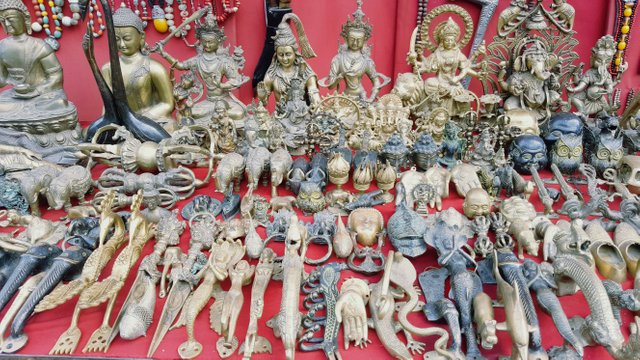
The outside sanctum of the fairly ominous asylum can be gone to. It is enhanced with obscured frescoes from the Swayambhu Purana, a seventeenth century sacrosanct content that portrays the creation legends of the Kathmandu Valley. Shantipur is moreover called Akashpur (Sky Place) and it addresses the fifth segment.
The two shot shape asylums (shikra) on each side of the stupa, known as Pratappur and Anantapur, were given by King Pratap Malla to empower him to obtain a triumph over Tibet in the seventeenth century. The account of his flourishing is recorded on the twin rings in front.
At the upper east corner of the complex is the Shree Karma Raj Mahavihar, a working Tibetan religious network with a noteworthy Buddha statue and yak margarine candles lit by pioneers. The occupant ministers serenade around 3 or 4pm consistently. The northwest corner is home to Agnipur, a rejected place of love to the out of date Hindu fire god Agni, who exchanges devoured commitments to heaven. Between these two, north of the guideline stupa, is Nagpur, a little tank with a snake image at the base. This appeases the valley's notorious snake spirits.
At the most noteworthy purpose of the eastern advances is a unimaginable bronze vajra (thunderbolt), a Tantric picture of power, improved with the signs of the Tibetan zodiac.
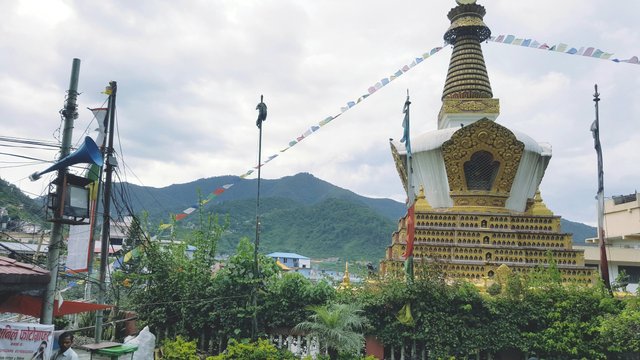
Right when to Go
The atmosphere is most flawless in Kathmandu in spring and fall. Swayambhunath is most natural in the morning (before 9am), when it has a bigger number of travelers than guests. If possible, visit on a Saturday, the principle day Nepalis have off from work. This is the basic day of activity around the Harati and diverse blessed spots.
Festivities and Events
The two essential festivals celebrated at Swayambhunath are Buddha Jayanti(in April or May) and Losar (in February or March). In the midst of these conditions, various explorers visit the asylum and the clerics influence a lotus to plan on the stupa with saffron-tinted paint. Similarly basic is the month-long Gunla celebration (August or September) indicating the complete of the stormy season.
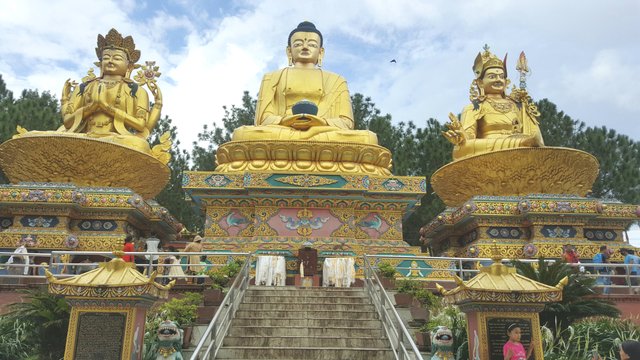
10 Facts about Swayambhu Stupa
The stupa's white vault demonstrates the womb of creation whose phallic match is in the square pinnacle.
Over the Buddha's Eye is a tower of 13 brilliant circles speaking to the step to edification
The drowsy, all-seeing Buddha eyes that gaze out from the best have turned into the quintessential image of Nepal.
The famous Buddha eyes gazing out drowsily from each side of the pinnacle (situated to the four cardinal headings) are those of the omnipresent Primordial Buddha.
Between every one of the sets of eyes is an image that resembles a question mark - this is the Nepali number "1" and speaks to the solidarity of all things.
Viewed as the most imperative Buddhist site in the capital, the sanctum's all-watching eyes is said to be that of Lord Buddha looking from the pinnacle that is the model historic point of the nation.
Gold plaques transcending the eyes like a crown portray the Five Dhyani Buddhas, divine buddhas who are related with the five detects, the four cardinal bearings in addition to the inside, and numerous other emblematic gatherings of five.
The Five Dhyani Buddhas are additionally regarded with special shrines at the base of the stupa. They confront the four cardinal headings, in addition to one marginally left of east to speak to the middle course. Between them are sanctums to four of the Buddhas' consorts. Connecting every one of the nine sanctums together is a chain of petition haggles lights. The five principle hallowed places are encased in excellent plated copper work, for which the Kathmandu Valley is famous.
At the base, there is a ring of little Tibetan supplication wheels encompassing the vault. Numerous pioneers and in addition guests strolled endless adjusts around the arch (in a clockwise course), droning supplications and turning the wheels to send their petitions and serenades to the paradise.
The two primary celebrations celebrated at Swayambhunath are Buddha Jayanti(in April or May) and Losar (in February or March). Amid these circumstances, numerous travelers visit the sanctuary and the priests make a lotus design on the stupa with saffron-hued paint. Likewise essential is the month-long Gunla festivity (August or September) denoting the finish of the stormy season.
Category>Stupa,temple photography
Camera>Samsung galaxy note 5
Location>Swayambhunath Stupa,Ktm Nepal
People taking pictures>Myself
If you like, please upvote, comment & follow.
Thank you,
Great history behind this @dhanu1998
Good research and helpful by interesting facts about it..
Good content. Keep it up 👍
By yours,
@majestyman
Thank you so much @majestyman for your great comment.I'm impressed your comment style.
This post has received a 2.44% upvote from thanks to: @dhanu1998!!!
thanks to: @dhanu1998!!!
For more information, click here!!!!
If you use our Robot before your post has 1 day and get an Upvote greater than 1%, you will automatically receive Upvotes between 1% and 10% as a bonus from our other robots.
Very good article .
Posted using Partiko Android
thanks my friend
You are always good on Indian articals , this feel me proud
Posted using Partiko Android
Nice blog
Thank you
nice photography and good information brother.
Thank you @mihirbarot brother.